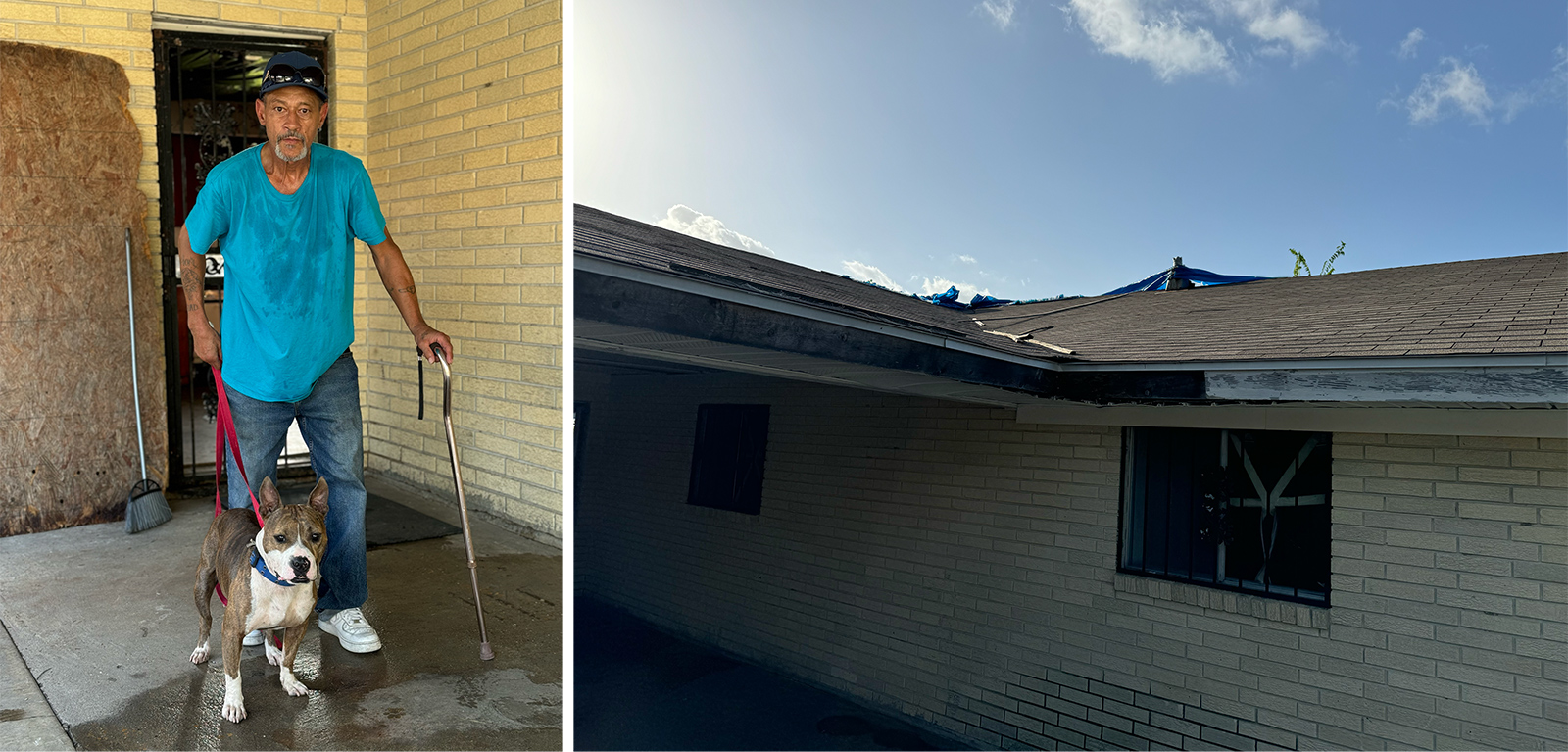Hello, and welcome back to State of Emergency. My name is Zoya Teirstein, and today we’re going to be talking about a place one journalist dubbed, “the most unfortunate city in the United States.”
It’s been just over four years since Hurricane Laura slammed into southwest Louisiana just shy of Category 5 status — the fiercest storm the state had seen in a century. Six weeks later, Hurricane Delta, a Category 2, carved a near-identical gash through the Bayou State. That winter, a deadly freeze gripped the ravaged region. A few months later, spring floods dropped a foot and a half of rain on Lake Charles, the city that had already endured, at that point, three epochal disasters.
Hurricanes Laura and Delta took the city and shook it like a snowglobe, picking people up and putting them down in new parts of town.
I traveled to Louisiana in July to report on the community’s recovery, and examine how the string of storms impacted its politics. Before I went, I watched a meeting of the Calcasieu Parish Police Jury, the administrative and legislative body that oversees Lake Charles and the rest of Louisiana’s Calcasieu Parish (pronounced cal-kuh-shoo). It was apparent how eager officials were to move on from talk of the disasters. An assessment presented at the gathering noted that “there is excitement among our leaders to make great strides in areas that do not involve hurricane recovery.” Minutes later, the jurors approved the use of the parish courthouse grounds for a food and music festival that its organizer promised would be the “go-to festival for the month of November for the state and the region.”
But when I visited Lake Charles and talked to residents there, I saw that, while the city is making progress recovering from the storms’ physical and economic damages, it’s still grappling with another legacy the storms left behind: Laura and Delta took the city and shook it like a snowglobe, picking people up and putting them down in new parts of town as they sought refuge from storm-battered homes and neighborhoods. Others left the city entirely, ending up in places like Houston and New Orleans. Lake Charles, the larger parish, the state, and even the federal government, however, don’t have uniform or effective ways of tracking where all these people have drifted.

That has long-lasting political implications for both the people who leave and those who stay. When a city or neighborhood loses citizens, it doesn’t just lose some of the social fabric that imbues a place with feeling. Where people end up dictates district lines, congressional representation, and how state and federal resources are distributed. So what happens when a state fails to capture the population-level impacts of natural disasters? How can cities account for storms that hollow out a generation of working-class families?
Lake Charles is one of many places across the country contending with these questions, whether their represented officials are willing to acknowledge it or not. Up until now, the invisible population trend lines being etched into Lake Charles have been a lot easier to ignore than scarred rooftops and abandoned buildings.
Read the full story, and see more pictures from my trip to Lake Charles, here.
“I’m not giving up. I ain’t got nowhere else to go.”
Lake Charles resident Edward Gallien Jr., 67, lives with his pit bull, Red, on Pear Street in northern Lake Charles. His house was destroyed by Hurricane Laura in 2020. Gallien, who inherited his property from his parents, is still holding out hope that help will come so he can rebuild. Read more here.

What we’re reading
Extreme heat sickens Harris, Trump rallygoers: An analysis from The Washington Post found that at least 78 Trump rally attendees were hospitalized with heat-related sickness over the past few months. And a Harris rally in Wisconsin in August was paused after an attendee “appeared to suffer from heatstroke,” the Post reported. The two candidates have vastly differing views on climate change, which is contributing to dangerously high temperatures across the U.S. and around the world.  Read more
Read more
The Atlantic wakes up: The National Hurricane Center is tracking two systems in the Atlantic, one potentially headed for the Caribbean and the other developing near Africa. September is the busiest month for hurricanes in the Atlantic hurricane season. The next named storm will be called Francine. Read more
Read more
Tropical Storm Hone floods the Big Island: A strong tropical storm dropped 10 to 15 inches of rain on Hawai‘i’s Big Island last week, causing widespread flooding and temporarily knocking out power for 24,000 customers. Another storm, Hurricane Gilma, is headed for the Aloha State this week. Read more
Read more
Schools in Michigan close due to extreme heat and power outages: Multiple districts in the state, including Detroit Public Schools Community District, closed or called a half-day during their first week of classes after extreme heat and inclement weather caused power outages. Outdated cooling systems in some schools couldn’t keep up with the high temperatures, which reached into the 90s. Read more
Read more

